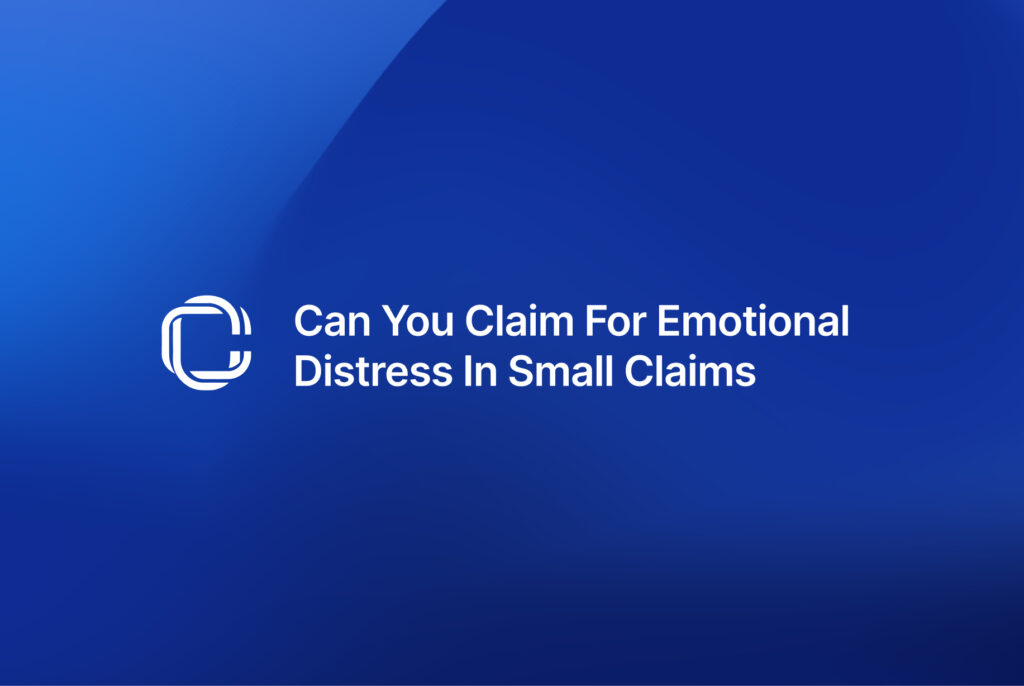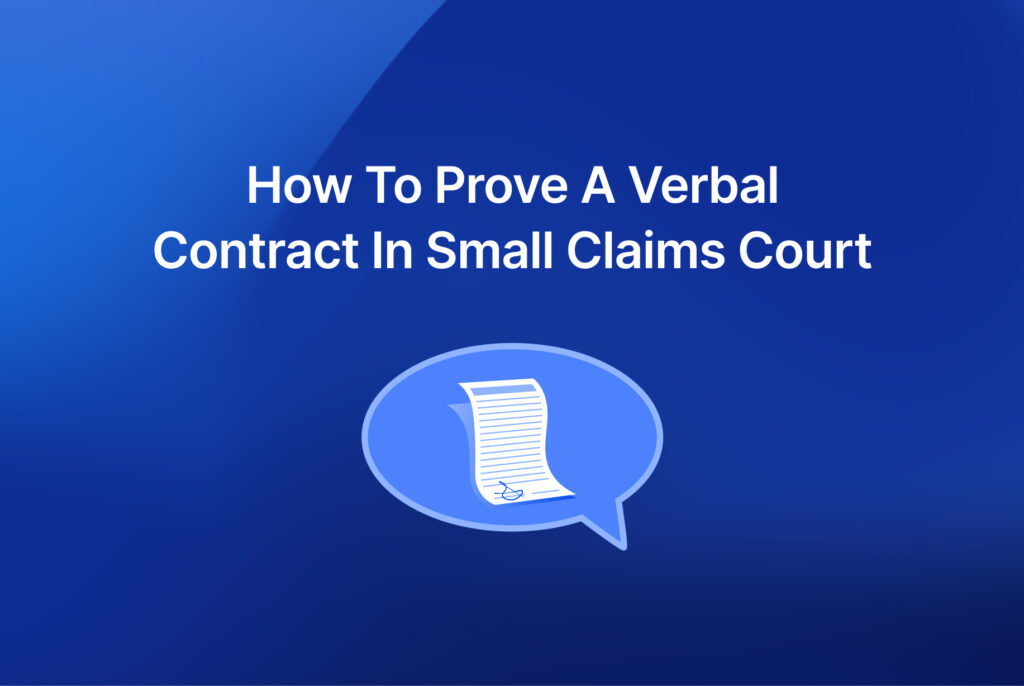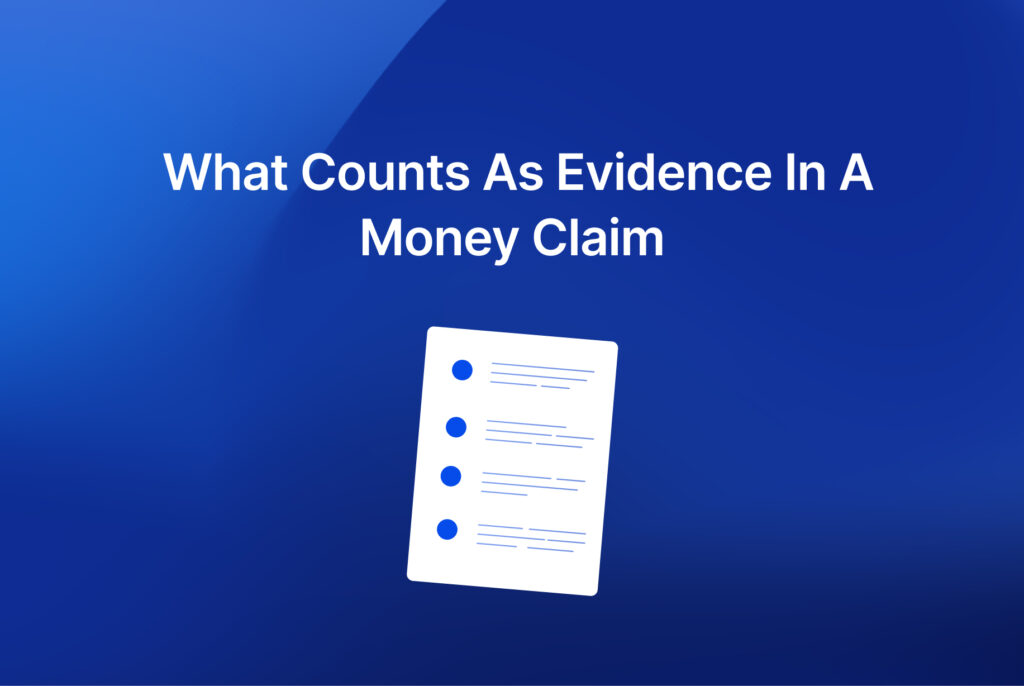Learn how to organise, submit and present evidence in UK small claims. Clear steps, deadlines and mediation tips. CaseCraft.ai helps you win.
To build a persuasive case in the small claims court, evidence is your biggest ally. You need to show the court what happened, why it matters and how much money you are owed. This guide explains how to gather, organise and present evidence in small claims cases, using the latest rules and practical tips from official sources. It is written for people in England and Wales who want to handle a claim themselves and focuses on disputes under £10,000, which go through the small claims track. Even if your dispute is larger, the techniques here will help you prepare.
CaseCraft.AI demystifies the legal process: the platform asks simple questions, generates court‑ready documents and files your claim online. This UK small claims guide explains compulsory mediation, shows how to use evidence effectively, and outlines how CaseCraft.ai can support you.
Why Evidence Matters in Small Claims
The small claims court evidence is designed for straightforward disputes under £10,000. Cases are decided on the balance of probabilities: the judge asks whether your version of events is more likely than the other side’s. Evidence is how you tell your story and prove what happened. Without clear documentation, photographs or witness statements, the court may struggle to see why you should win. Remember that small claims hearings are short, often an hour or less, and judges appreciate well‑organised material. Good evidence can also persuade the other party to settle early, saving time and costs.
Evidence rules in small claims are flexible but fair. The court will accept most types of evidence as long as they are relevant and lawful. You do not have to use a lawyer, but you should still follow court directions and deadlines. The new compulsory mediation scheme means that money claims under £10,000 must go through mediation before proceeding to a hearing. Mediation allows you to show your evidence informally and can lead to a quicker settlement.
Being well prepared also keeps costs down. In small claims, you generally cannot recover legal fees from the other side, so it is essential to keep your case focused and avoid unnecessary expenses. The limitation period for most civil claims is six years, but it is wise to act sooner to avoid problems with evidence and memory. When you understand why evidence matters, you put yourself in the best position to achieve a fair outcome.
Types of Evidence You Can Use
Documentary Evidence
Documentary evidence includes any written or recorded material that supports your case. Typical items are contracts and agreements, invoices or receipts, correspondence such as letters or emails, diaries or logs of key events and warranties. Photographs, screenshots and audio recordings can also be documentary evidence when they capture relevant exchanges or damage. Gather original documents early, make copies for yourself and the other side, and back up digital files in more than one place.
Witness Statements
A witness statement is a written account from someone who has first‑hand knowledge of the events in dispute. It should be in the witness’s own words, set out in numbered paragraphs and end with a statement of truth. Independent witnesses carry more weight than friends or relatives. Exchange statements with the other party ahead of the hearing, and avoid coaching witnesses; they should speak only about what they personally saw or heard. Hearsay evidence (what someone has told them) is admissible but given less weight.
Photographic and Video Evidence
Photographs and videos are persuasive because they show rather than tell. Take clear images of defective goods, damage or repair work, capturing both context and detail. Date each photo, label it and include printouts in your bundle. Back up digital files.
Expert Reports
Some disputes require specialist knowledge. Expert reports from surveyors, engineers or accountants must be impartial and disclosed to the other side. You need the court’s permission to rely on an expert, and the expert’s duty is to the court, not to you. In small claims, judges prefer concise reports or joint experts to save costs.
What Evidence Is Not Admissible
Evidence must be relevant, lawful and fairly obtained. The court can refuse to consider material that is:
- Irrelevant – documents or statements that do not relate to the issue in dispute.
- Illegally obtained – evidence gathered through unlawful means (e.g., secret recordings without consent, stolen documents); it may be excluded entirely.
- Hearsay without warning – evidence that is second‑hand. Hearsay is admissible in small claims but has less weight, and you must disclose it in advance.
- Hidden from the other side – anything not shared with the defendant before the hearing can be disallowed.
- Opinion disguised as fact – witnesses should avoid speculation and state only what they know.
Always check court directions. If the judge orders a deadline for exchanging documents and you miss it, your evidence may be excluded, and your case could even be struck out.
How to Organise Your Evidence
Creating a Checklist
Preparing evidence in small claims in the UK is easier with a checklist. At a minimum, you should:
- Gather all relevant documents, photos and correspondence.
- Sort them chronologically and label each clearly, numbering the pages and creating a simple index.
- Obtain signed witness statements and expert reports (if needed).
- Make copies for yourself, the court and the defendant; back up digital files.
Step‑by‑Step Document Preparation
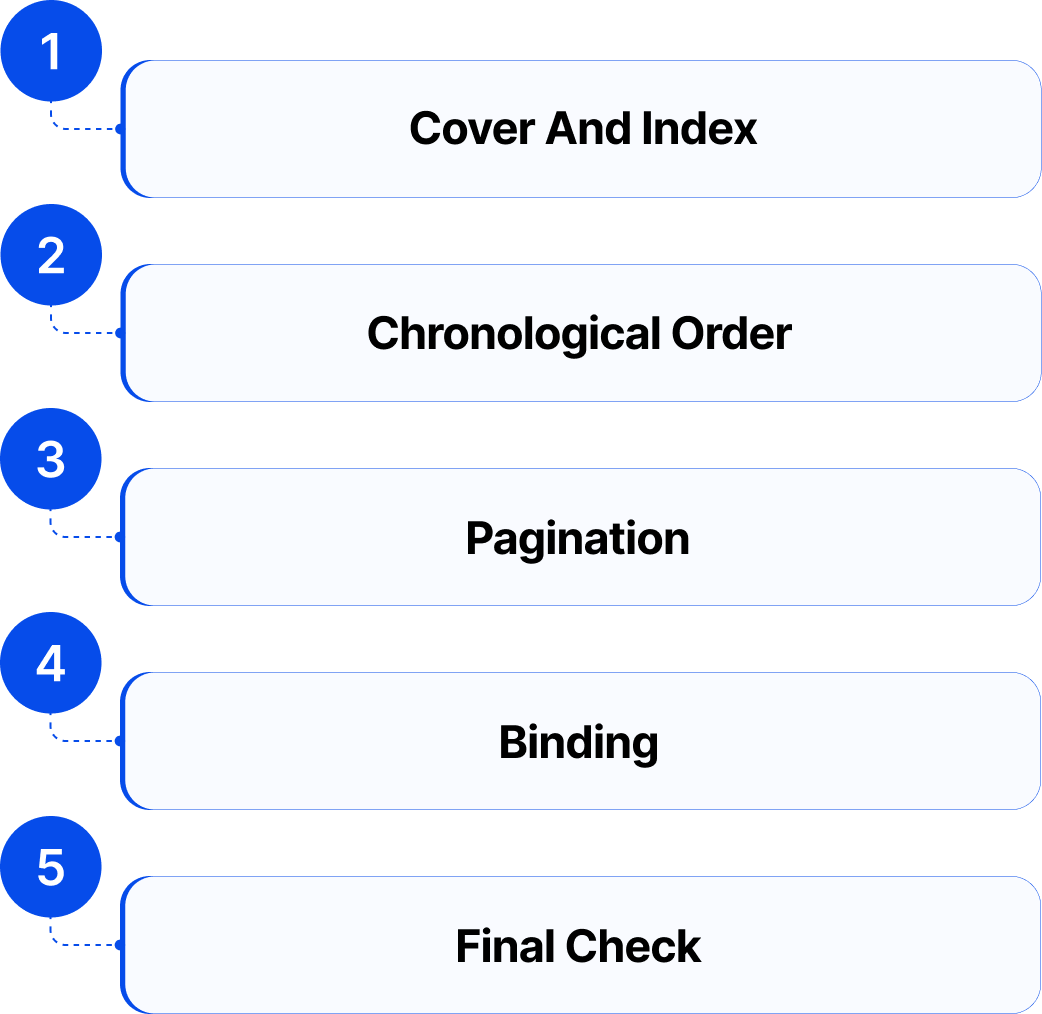
- Cover and index – Start with a cover sheet showing the case title and claim number, followed by an index with document titles and page numbers.
- Chronological order – Arrange documents in the order events occurred, using tabs or separators for sections such as contracts, correspondence and photos.
- Pagination – Number every page consecutively, including photos, witness statements and any expert reports.
- Binding – Clip or bind the pages in a ring binder; a neat file helps the judge navigate the material.
- Final check – Ensure each document appears on the index, witness statements follow the rules, and you have removed any material you do not intend to rely upon.
A concise checklist and streamlined preparation make it easier for you and the judge to follow the story of your claim.
Submitting Evidence to the Court
Deadlines and Requirements
CaseCraft.ai keeps you on top of court directions and deadlines. Once your bundle is ready, the platform surfaces the submission date from your Notice of Allocation (you’ll typically have at least 21 days’ notice), schedules reminders, and guides you to exchange documents with the defendant on time, while generating a court-ready copy for filing and logging proof of postage or consent to email. Claims under £10,000 must go to mediation, so be prepared to share your admissible evidence with the mediator. Missing deadlines risks exclusion of your evidence or dismissal of your claim.
Admissible vs. Inadmissible Evidence
| Evidence Type | Admissible for Small Claims | Notes |
| Contracts, receipts, invoices | ✔ Yes | Original or certified copies; prove the transaction |
| Photos, videos | ✔ Yes | Must be clear and relevant; include date/time |
| Witness statements | ✔ Yes | Must be based on first‑hand knowledge and signed |
| Expert reports | ✔ Yes | Court’s permission required; must be independent |
| Hearsay evidence | ⚠ Yes, but limited | Admissible but given less weight; disclose in advance |
| Illegally obtained recordings | ❌ No | Likely inadmissible or given little weight |
| Evidence not shared with the defendant | ❌ No | May be excluded; risk of costs |
| Opinions or speculation | ❌ No | Witnesses must state facts |
Court Bundle Preparation
Even though small claims hearings do not require a formal trial bundle, court bundle preparation can save time and demonstrate professionalism. Inside, arrange sections in a logical order: claim form, statement of case, chronology, correspondence, photographs, witness statements and expert reports. Number each page. Add an index at the front. A well‑prepared bundle helps the judge quickly find evidence during the hearing.
Below is a flowchart showing the journey from gathering documents and photos to organising them, exchanging copies, mediating and finally presenting your bundle at court:
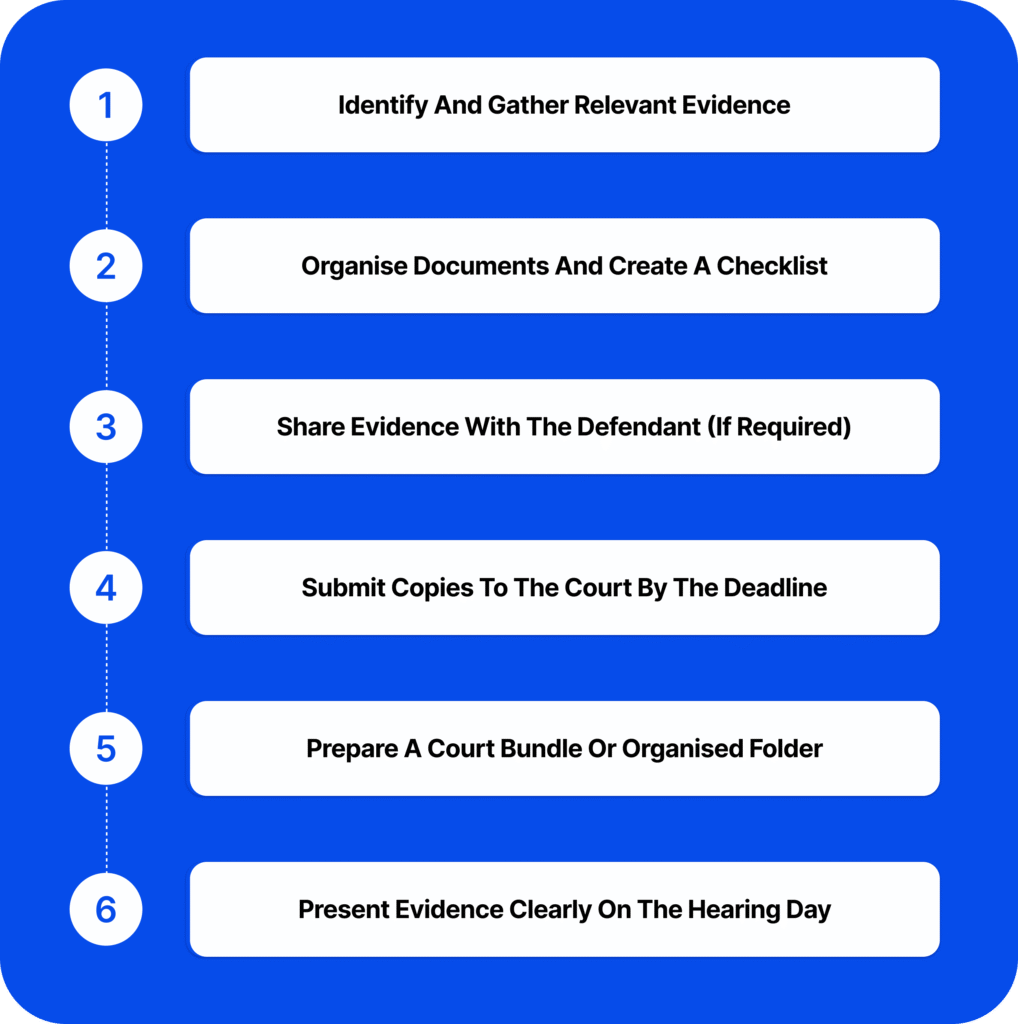
Presenting Evidence on the Hearing Day
How to Speak to the Judge
On the hearing day, you must guide the judge through your evidence calmly and clearly. Keep these points in mind:
Arrive early and prepared – Check in with the court usher and bring your bundle, copies and a notepad.
Be respectful – Address the judge as “Sir” or “Madam” and stand when speaking unless told otherwise.
Speak plainly – Summarise your claim and highlight key evidence; avoid legal jargon and long sentences.
Use page numbers – Refer the judge to specific pages in your bundle (e.g., “Page 12 shows the receipt”)
Stay composed – Listen carefully to questions and answer honestly. At the end, briefly explain why the evidence supports your claim and what you want the judge to order.
Handling Witnesses
If you call witnesses, let them know the hearing date and time and ensure their statements are exchanged ahead of the hearing. Review the statement with them so they understand they must speak truthfully from personal knowledge and avoid speculation. If a witness cannot attend, the court may read their statement, but hearsay evidence carries less weight.
Common Mistakes to Avoid
Avoid these common pitfalls:
- Missing deadlines – Late evidence may be excluded, and your claim could be dismissed.
- Disorganised bundles – Judges cannot follow messy papers; prepare a neat, paginated file.
- Overreliance on hearsay – Second‑hand statements carry little weight.
- Skipping mediation – Claims under £10,000 must go to mediation, and failure to engage can be penalised.
- Insufficient or undisclosed evidence – You must prove the agreement, breach, loss and amount owed; hiding documents may backfire.
Practical Tips and Best Practices
Combine official guidance and practical experience:
- Collect evidence promptly – Start gathering documents and photos as soon as the dispute arises.
- Keep a timeline – Maintain a diary of key dates, conversations and actions; it will help you draft your statement.
- Digitise and back up – Scan important papers, save emails and photos in a dedicated folder and use secure tools like CaseCraft.ai for storage and document generation.
- Engage with mediation – Mandatory mediation is a chance to resolve your dispute; well‑organised evidence helps achieve a settlement.
- Follow directions and stay objective – Respect deadlines, avoid exaggeration and focus on facts.
Winning with Evidence in the UK Small Claims Court
Presenting evidence effectively is the cornerstone of success in the small claims court. When you gather documents early, organise them logically and comply with court directions, you give yourself the best chance of persuading the judge. By preparing witness statements, photographs, receipts and reports, you provide a clear picture of what happened. In a system designed to be accessible, presenting evidence in small claims UK cases plays a pivotal role.
If the process feels daunting, CaseCraft.ai can help. Our platform asks simple questions, generates court‑ready forms and guides you through each step. You can file your claim online and track its progress. With clear, secure storage and guidance on mediation and evidence, CaseCraft.ai empowers you to handle your own claim confidently. Start today and make sure your voice is heard.
Disclaimer: The content on this page is for general information about small claims in England & Wales. It is not legal advice and does not create a solicitor-client relationship. CaseCraft.ai is not a law firm. If you need advice about your specific circumstances, seek independent legal advice from a qualified solicitor.
FAQ: How to Present Evidence in Small Claims Court
What evidence is accepted in the small claims court in the UK?
The court accepts most documents, photos, videos, witness statements and expert reports as long as they are relevant and lawfully obtained. Hearsay is admissible but has less weight.
Do I need witnesses?
Not necessarily. Documentary evidence alone may suffice, but independent witnesses can strengthen your case.
How do I present documents in small claims court?
-
Put everything in date order, paginate (1–X), and add a one-page index.
-
Label exhibits clearly (e.g., Exhibit A – Contract).
-
Make three sets (you/defendant/court), exchange by the deadline with proof, and bring originals.
What happens if I don’t have enough evidence in small claims court (UK)?
You may not meet the balance of probabilities; the judge can dismiss the claim or award less. Strengthen your case with documents, clear photos, and short, factual witness statements.
Can photos and videos be used as evidence in the UK small claims court?
Yes. Digital photos, emails and texts are acceptable if they are relevant and you can confirm when they were created.
Can witness statements be used in small claims court (UK)?
Yes. They’re allowed and often helpful. Use CPR format (numbered paragraphs, signed, dated, statement of truth), exchange by the court deadline, and have the witness attend if possible (hearsay carries less weight).





